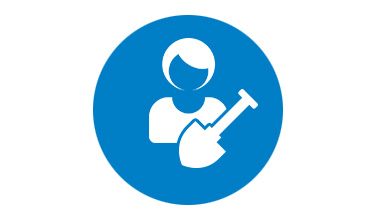10.5 million opportunities: leveraging Savings Groups with business training
26 Oct 2016

Through the help of NGO Hand in Hand's business training and the concept of 'table banking' members of the Ginroma Self-Help Group have all become successful business people in Njathaini based in Kasarani on the outskirts of Nairobi.
Ten-and-a-half million. That’s the number of Savings Group members worldwide. For more than two decades, in 70 countries, the groups have been credited with banking the unbanked, improving women’s economic empowerment and strengthening social cohesion.
Now, according new research, another triumph can be added to the list: boosting business incomes by 75 percent while creating thousands of jobs. That’s what happened when Hand in Hand teamed up with CARE in Rwanda to teach business skills to 130,000 Savings Group members – the majority of them women.
For NGOs working in poverty reduction and financial inclusion the message is clear: Savings Groups are good, but Savings Groups that provide intensive business training to their members are capable of producing measurably better outputs. Pity, then, that business training is so often overlooked.
How Savings Groups work
Take 20 or so people too poor to qualify for microfinance and teach them to contribute a group savings fund. Encourage them to borrow small loans if and when they need them – to fix a leaky roof, say, or to cover their medical bills. At the end of each year, pay back their savings with interest, and watch as they invest in household and productive assets. That, in short, is the Village Savings and Loan Association model – Savings Groups for short – pioneered by CARE some 25 years ago to close the credit gap among Niger’s rural poor. CARE remains a Savings Group leader to this day, with more than 4 million active members worldwide, and has developed the model to include a focus on business skills and livelihoods training, gender equality, and women’s economic empowerment in general.
How Hand in Hand works
Established in 2003, Hand in Hand also mobilises members and teaches them to save, but we aren’t focused on financial inclusion per se. Instead, we see groups as the means to an end: job creation. That means training each and every member in how to run their own business, providing in-house microfinance when group savings aren’t sufficient to fuel expansion, and linking members to larger markets to help grow their businesses. Over the years we’ve mobilised 1.8 million members and created 2.6 million jobs – a start, but nowhere near our ultimate goal. In order to truly reach scale, strategic partnerships are indispensable.
How Hand in Hand worked with CARE in Rwanda
In 2013, Hand in Hand and CARE joined forces around a common goal: to promote entrepreneurialism among 100,000 Savings Groups members in Rwanda, creating 80,000 sustainable jobs in three years.
An independent review of the program published last month confirms what our experience in the field told us all along: Hand in Hand’s partnership with CARE was a considerable success, exceeding targets in several major categories.
By the numbers

129,816 vs. a target of 100,000
Members trained
Access to CARE’s pre-existing Savings Group infrastructure gave us a massive head start. Here, after all, were thousands of groups, mobilised, with strong financial skills and raring to go. When all was said and done, Hand in Hand’s business training reached 4,390 groups versus a target of 3,000. In other words, we’d achieved scale – with speed and efficiency.

115,041 vs. a target of 80,000
Jobs created
Reaching so many Savings Groups virtually guaranteed we would exceed our jobs target, too. More interesting was the surge in hiring our members produced. Project members hired 30 percent more full-time workers and 55 percent more part-time workers than Comparison Group counterparts.

Average monthly increase: 75%
Incomes
Comparison Group members’ businesses earned an average of US $28 per month, according to the review. Members who received our training, meanwhile, ran businesses that earned US $49 per month – a 75 percent boost. The difference was most starkly reflected in household assets. Seventy-nine percent of our members reported investing in household assets such as livestock and equipment at the end of the programme. Only 49 percent of Comparison Group members said the same.

80% vs. a target of 75%
Women’s participation
Hand in Hand entrepreneur Rwamagana said it best: “We have been given freedom of speech, space and more. We feel confident and know how to deal with issues,” she told researchers. The data bear her out. “Women’s small businesses are more profitable than men’s, and an equal number of men and women now have access to credit,” said the report.
What’s next
Ten-and-a-half million. That’s the number of Savings Group members worldwide. Together with CARE, Hand in Hand has proven it’s also the number of opportunities to create jobs, raise incomes and improve lives and empower women – cheaply and quickly. Context is everything, of course, and Rwanda’s growing economy no doubt played a role in the programme’s success. But at the very least the Savings Group-business training model deserves testing in another location. That’s why, with our project in Rwanda behind us, Hand in Hand is seeking partners as we expand into Tanzania. Let’s get to work.
